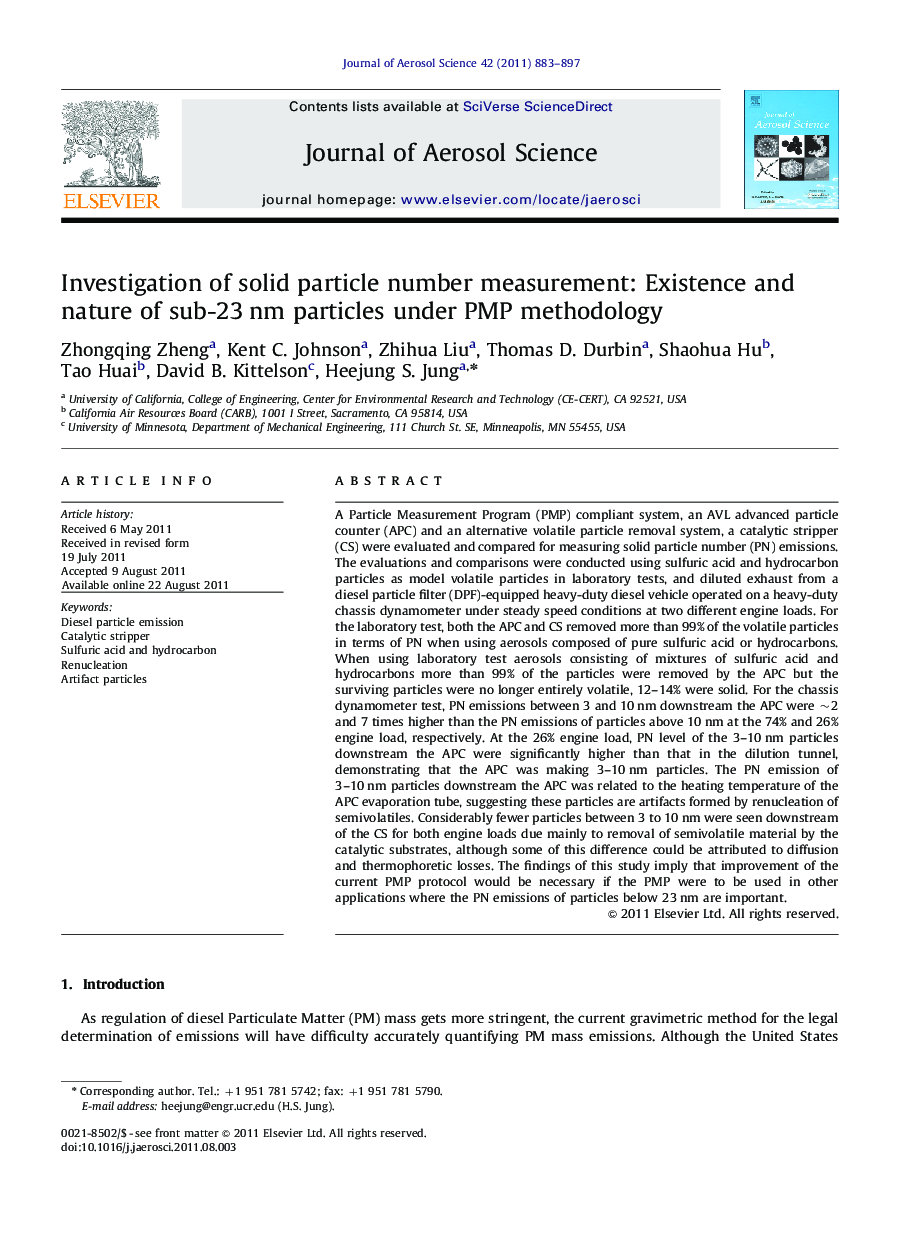| Article ID | Journal | Published Year | Pages | File Type |
|---|---|---|---|---|
| 4452656 | Journal of Aerosol Science | 2011 | 15 Pages |
A Particle Measurement Program (PMP) compliant system, an AVL advanced particle counter (APC) and an alternative volatile particle removal system, a catalytic stripper (CS) were evaluated and compared for measuring solid particle number (PN) emissions. The evaluations and comparisons were conducted using sulfuric acid and hydrocarbon particles as model volatile particles in laboratory tests, and diluted exhaust from a diesel particle filter (DPF)-equipped heavy-duty diesel vehicle operated on a heavy-duty chassis dynamometer under steady speed conditions at two different engine loads. For the laboratory test, both the APC and CS removed more than 99% of the volatile particles in terms of PN when using aerosols composed of pure sulfuric acid or hydrocarbons. When using laboratory test aerosols consisting of mixtures of sulfuric acid and hydrocarbons more than 99% of the particles were removed by the APC but the surviving particles were no longer entirely volatile, 12–14% were solid. For the chassis dynamometer test, PN emissions between 3 and 10 nm downstream the APC were ∼2 and 7 times higher than the PN emissions of particles above 10 nm at the 74% and 26% engine load, respectively. At the 26% engine load, PN level of the 3–10 nm particles downstream the APC were significantly higher than that in the dilution tunnel, demonstrating that the APC was making 3–10 nm particles. The PN emission of 3–10 nm particles downstream the APC was related to the heating temperature of the APC evaporation tube, suggesting these particles are artifacts formed by renucleation of semivolatiles. Considerably fewer particles between 3 to 10 nm were seen downstream of the CS for both engine loads due mainly to removal of semivolatile material by the catalytic substrates, although some of this difference could be attributed to diffusion and thermophoretic losses. The findings of this study imply that improvement of the current PMP protocol would be necessary if the PMP were to be used in other applications where the PN emissions of particles below 23 nm are important.
► Sub-23 nm particles were found downstream the PMP volatile particle remover (VPR) in our previous study. ► An AVL particle counter and a catalytic stripper were used to investigate the nature of these particles. ► Laboratory tests showed that some solid particles were formed from volatile precursors in the APC. ► Particle number level of the 3–10 nm particles downstream the APC was higher than that in the dilution tunnel. ► The majority of sub-23 nm particles are artifact particles formed by renucleation of semivolatiles.
